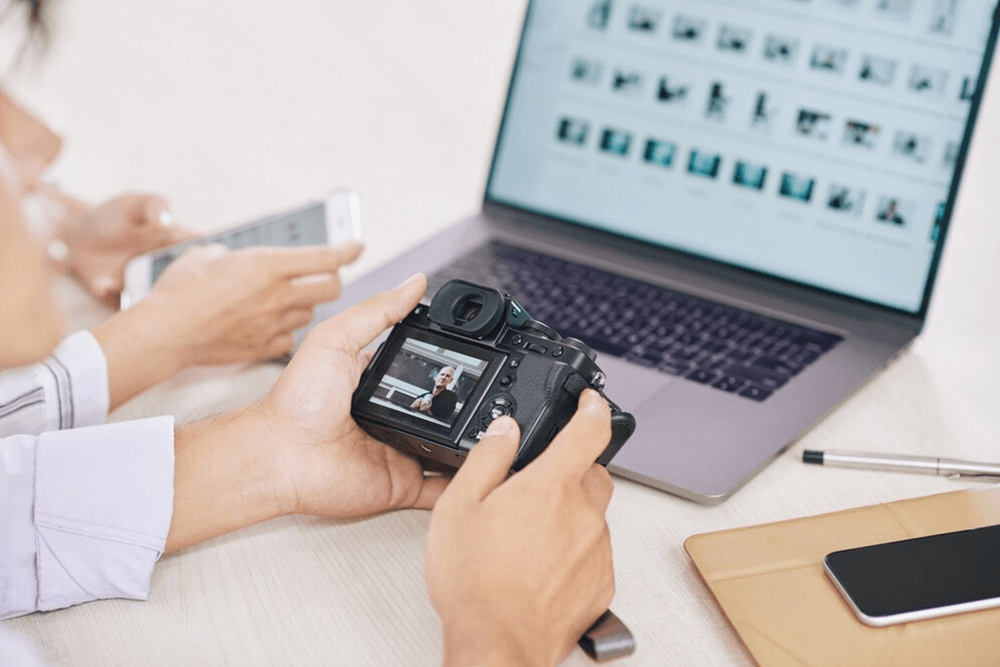Have you ever wondered how the photo editing process works?
Of course you have, most likely while wondering, “what is taking them so long?” when waiting for the effects of your photo session.
Unfortunately, photography editing is not something you can nor should rush. However, it doesn’t mean there’s no way to make the process more manageable.
One such way is mastering the gentle art of photography culling…
The Definition of Culling in Photography
Used by most professional photographers, photo culling is a crucial step in the editing process, helping us always deliver the highest quality work to our clients.
But what is culling in photography?
Culling generally refers to selecting items from a group according to desired or undesired traits. Some also explain it as reducing or controlling the group.
In photography, it has the same meaning. To cull means reviewing your taken photos and selecting the best ones for edits while eliminating all photographs that don’t meet your quality standards, e.g., duplicates or blurred photos.
For instance, imagine your event photographer ends up with 3,000 photos after the event ends. It’s unlikely that 100% of these photographs are top-quality. Some will be blurred, others duplicated, or not flattering.
Through culling, a photographer eliminates such images, cutting down the final number of photos from 3,000 to 1,000. Extreme? Sure, but without it, the editing process would be unbearable.
However, there’s more to photography culling than just our convenience…
Why Is Photo Culling Important?
One of the main reasons behind photo culling is that it saves time when editing.
Think about it: a single wedding photo session consists of roughly 2,000-3,000 photographs. Uploading them all into edits means scrolling through thousands of photos, many of which might be uneditable.
However, if a photographer eliminates low-quality images before editing, the number of photographs eligible for editing suddenly becomes much more manageable.
Of course, this speeds up the editing process, but it also improves its efficiency and quality, allowing photographers to focus on high-quality photos. It also helps us provide you with the best and most flattering pictures, whether your corporate headshots or a family photoshoot, saving you time and nerves on browsing through pictures that might not be up to your expectations.

How to Cull Photos?
We can’t speak for all photographers, as each can have a different approach to culling, but at Pixel Studio Productions, we usually all follow a similar pattern:
#1 Workspace Preparation
We usually start by gathering all the photos from the session and importing them to the computer.
We then choose the culling method. There are only two options here: we either select “keepers” or reject “bad” photos. We recommend you go with the approach that feels most natural for you when culling yourself.
#2 Photo Review
We then quickly browse through all the photos, marking the unusable ones (e.g., out of focus, poorly lit, closed eyes in portraits) for deletion.
We recommend using a simple rating system (e.g., stars or flags) to mark potential keepers. Don’t be too critical at this stage; the goal is narrowing the selection down.
We then perform a more thorough evaluation of each picture. For instance, we check critical areas like eyes in graduate portraits for sharpness and focus.
We also evaluate the composition and exposure, cropping or adjusting to improve each photograph. If necessary, of course. Sometimes, it’s best to leave a good photo alone.
Another thing we do is compare similar shots and duplicates to choose the best.
Subtle differences can make all the difference here, so be sure to thoroughly examine similarities and differences to determine which photo is best whenever culling on your own.
#3 Final Selection
Once the initial review is over, we go through the higher-rated photos again and further refine the selection by applying stricter criteria.
At this stage, the goal is to ensure that the selected photos are consistent in quality, style, and mood, especially if they will be used as a set, for instance, corporate headshots or a wedding gallery.
Our pro tip for aspiring photographers is to include metadata and keywords to the selected photos to help with future searches and organization.
#4 Backup and Organization
We always backup all our selected photos on a separate drive or cloud storage. After over a decade of experience in professional photography, we always recommend aspiring photographers to be better safe than sorry.
We also create subfolders and collections for different purposes, such as best shots and edited photos. We will then send you our final selections for acceptance and make the necessary adjustments if needed.
Manual vs. AI Photo Culling
As you probably suspect, manual photo culling can be a lengthy process.
It requires us to browse through each photo taken, carefully assessing whether it meets the requirements for inclusion in the editing process and, eventually, the final gallery.
Many photographers have started using AI technology to speed up the culling process. Programs like Aftershoot or Imagen-AI are widely used throughout the industry, helping professionals quickly analyze and select eligible photos.
At Pixel Studio Productions, we use both manual and AI culling techniques. We leverage the latest technology to help us comb through our photoshoots more efficiently, but we leave the final selection to our professional judgment.
This way, we offer our clients an efficient but tailored approach to culling, providing fast and high-quality results with a personalized touch.

Our Tips for Culling Photos
Before we wrap up our guide, we want to leave you with some professional culling tips. Whether you’re an amateur photographer or an aspiring professional, the following guidelines will help you master the art of culling:
Tip #1: Cull Before Editing
You might be tempted to edit photos while culling. One word of advice – don’t. Many inexperienced photographers find quality pictures and immediately proceed to edit them.
The problem with this approach is that you can’t possibly know whether the following two photographs won’t be better than the one you’ve just edited.
This means that by editing on the go, you’ll likely waste time editing photos you won’t select to be sent to your client. Instead, cull first and edit later. That is the best way to ensure you only end up with the highest-quality photos.
Tip #2: Be Ruthless
Photographers can be overprotective about their work (trust us, we know). When culling, however, you must be ruthless, leaving only the best work and deleting the ones that may not be portfolio-worthy.
Our advice is not to think too hard about it. Go through all your photos and delete all that you deem unworthy. Then, go through them again and choose the best of your initial choices. Comb through them as long as it takes until you’re left with only the best-quality photos.
Tip #3: Find Your System
Mastering culling is a marathon, not a sprint. Establishing a well-working system here may take some time, so don’t be afraid to experiment. However, once you find the system that works best for you, stick with it.
The most popular methods are culling in and out.
Culling focuses on marking pictures you want to keep, either by adding flags, markers, or ratings. Calling out refers to something opposite.
Another advice is to learn how to group your photographs during the second culling phase, categorizing them according to how you want to proceed.
Tip #4: Leverage Technology
There are many tools and programs that focus on photography culling. Don’t be afraid to leverage them to maximize your productivity and speed up the process of selecting the best pictures.
However, don’t over-rely on culling software. AI tools can be of great help here, but nothing can beat a photographer’s eye. Trust your own judgment to select the final batch, especially if the project requires a unique or artistic approach.
Key Takeaways
Culling plays a crucial role in the photography editing process. It allows photographers to select the best pictures, saving them time and increasing the editing process efficiency.
It also allows professional photographers to deliver the highest-quality pictures to their clients, giving them the best value for their money.
However, for photo culling to work, the right approach is required.
And it’s our unique approach to culling that allows Pixel Studio Productions to stand out from our Houston competitors and continuously provide our clients with premium-quality photography services.
Book your session today and experience the Pixel Studio Productions difference!
